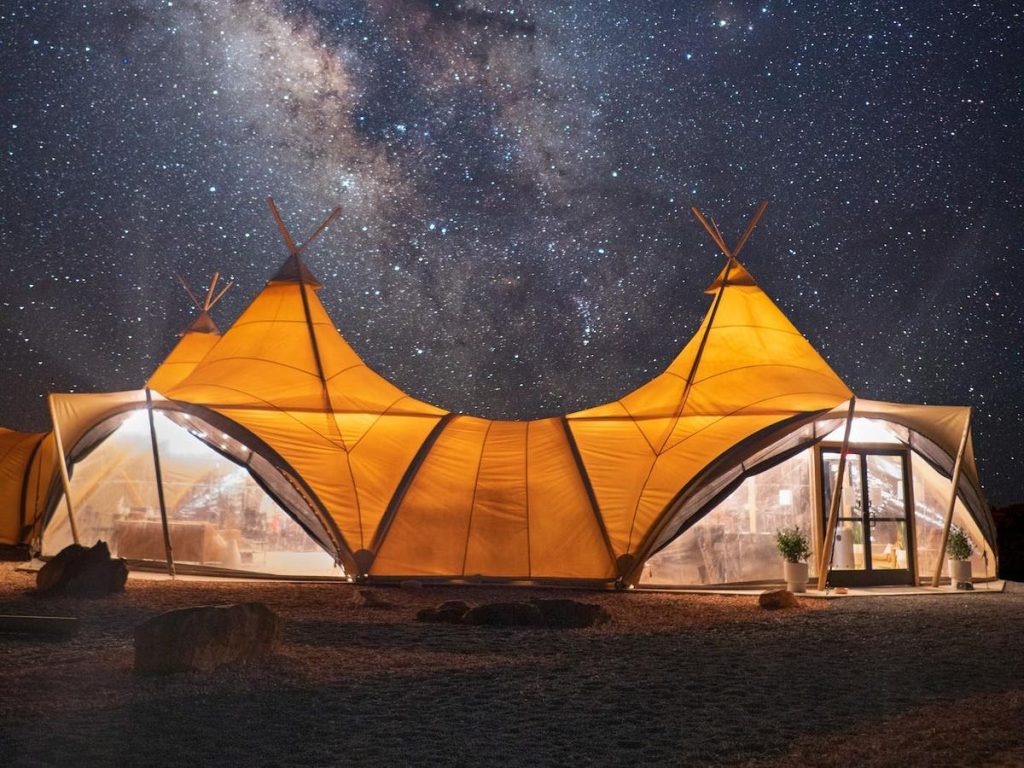Non-profit DarkSky International has announced a new certification scheme for campsites, glamping resorts and lodges that could make it easier for stargazers to find accommodation with truly dark skies.
The new DarkSky Resort status—which recognizes properties that use dark sky-friendly lighting—is designed to set the standard in the travel industry and encourage hospitality companies to join in the efforts to protect the night sky from growing light pollution.
A recent study found that over the last 12 years the night sky’s brightness has increased by seven to 10% per year.
Astro-Tourism Is On The Rise
“We’ve had our International Dark Sky Places program for 20 years and we’ve seen growing interest from private resorts contacting us, but until now we’ve concentrated on public parks and certifying lighting fixtures, which leaves a big gap in the middle,” said Ruskin Hartley, CEO & Executive Director at DarkSky, in a video call. “Now there’s a growing interest in astro-tourism we saw an opportunity to introduce a new program for private lodging and resorts.”
A dark sky doesn’t happen by accident; these are not remote lodges that just happen to be in places where there’s a dark sky. In fact, go to the most remote accommodation on the planet and it’s very normal to discover that their lighting is awful. Not so DarkSky Resorts. “These are all lodges that have a dark sky and have thought carefully about their lighting, followed our lighting plan, developed a lighting plan and modified light where necessary so they can protect what people are coming to enjoy,” said Hartley.
Luxury Glamping Goes Dark
The pilot scheme was developed Under Canvas Lake Powell – Grand Staircase, a property 15 miles up the road from Page, Arizona where safari-inspired luxury tents perched on a canyon rim include ensuite bathrooms, king-size beds and a wood-burning stove for chilly nights. It’s been named one of the “Best Resort Hotels in Utah” by Travel+Leisure.
“There are some incredible tent lodges in Africa, but luxury high-end glamping has been late coming to the U.S.,” said Hartley. “It’s a different market to the people who are willing to pitch a tent and cook over gas, but I think both people are going to those places for the same reason—they want to reconnect with the stars overhead.”
Until now there’s been a focus on Dark Sky Parks—typically U.S. National Parks such as Grand Canyon in Arizona, Arches in Utah and Big Bend in Texas—but the new DarkSky Resort status is part of a plan by DarkSky International to focus more on how lighting should be used in different contexts to prevent light-pollution. “We now have guidance for lodging in dark sky locations and for sports lighting, and we’ll soon have guidance for how to apply dark sky lighting principles and responsible outdoor lighting principles to gas stations, housing developments and streets,” said Hartley.
The Future For DarkSky Resorts
The new DarkSky Resort status is designed to be scalable. “We’ve tried to set the set up the guidelines so that they can be scalable over time so it could be applicable to an Airbnb-type facility—maybe two or three cabins—all the way up to the massive amount of lodging in, say, the Grand Canyon,” said Hartley. He added that the new scheme is also about creating an incentive for, and giving recognition to, private businesses close to existing Dark Sky Parks that support the protection of dark skies.
It’s hoped that new certification can become the de facto standard for all lodging in sensitive locations, though there’s one particular type of hotel that DarkSky has on its to-do list where bright light can interfere with nature in a hugely negative way. “The one we would love to crack are the beachside hotels in Hawaii and Florida on turtle beaches so they get some kind of recognition for doing things right,” said Hartley.
Wishing you clear skies and wide eyes.
Read the full article here










